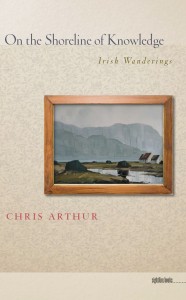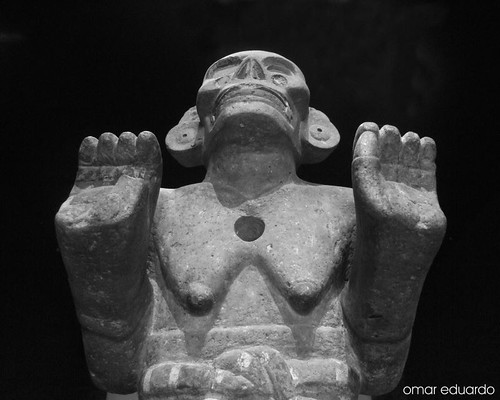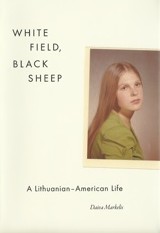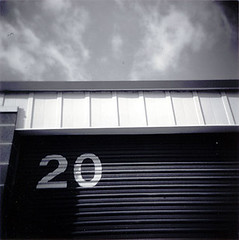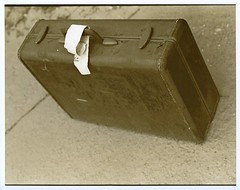Chris Arthur, On the Shoreline of Knowledge: Irish Wanderings. Iowa City: Shoreline Books, 2012.
This is Part II of a two-part interview with Chris Arthur. Click here to access Part I.
Julija Šukys: Like you, I’m obsessed with the writing of ordinary lives. The following passage is marked in pencil and with exclamation marks in my now dog-eared copy of your book: “History is determined by the inky regimen of print. But ordinary lives happen more in the key set by a pencil: fainter, less permanent, more tentative, easily erased. [. . .] I prefer to take the back routes, to look at littler events, the stories of the day to day, of families and their places. These, more than any headline, are what make us who we are.” I write ordinary lives in order to create a trace for those I fear will (unjustly) be forgotten. By contrast, though, I get the sense from your work, and the ways in which you reach so far back (to Neanderthal mourning rituals, for example) that you write with the consciousness that this too, this trace of yours, will fade. Am I right about this?
Chris Arthur: Yes! I think all the traces we leave, all the traces we write, will vanish. According to Buddhist teaching, by which I’ve been more than a little influenced, one of the three marks of existence – that is, one of the three absolutely fundamental features of our world – is what’s termed “anicca,” or impermanence. That strikes me as highly plausible. I think everything passes. Nothing humans do – still less who they are – is permanent, however much we may rail against this unpalatable fact. When I read your question I was reminded of an early essay I wrote entitled “Ne Obliviscaris” (= “lest we forget”). It emphasizes, more explicitly than the other essays do, the way in which anicca claims us all:
If the mind cannot immediately encompass the idea of its own complete annihilation, the fact that soon there will be no one who remembers us, ask what remains – beyond the dumb inheritance of flesh – of the people who were our great-great-grandparents. Or, if that is still too close, ask what now remains upon the shifting network of human memory of the ten-year-old Iron Age girl drowned as she helped her mother collect mussels from along some windswept northern shore. Let her act as symbol for the millions of strangers unknown to us, unremembered by anyone, who have vanished without trace in history’s wake and are recoverable only through the imagination.
Loss and transience are, I think, important motifs that recur throughout my five essay collections. This may make them sound rather sombre, if not grim – but I don’t think they are; I hope they’re not. It’s transience, after all, that underscores a lot of life’s beauty, what helps to make it beautiful.
In “Kyklos” you write about the way your essay has “spiralled away, evolved and developed, meandered unpredictably from its initial point of origin.” A great topic for discussion over the course of my fall workshop has been precisely this aspect of essay writing: the fact that you may not (almost certainly don’t) know where you’re going. Essays wander. They are experiments. They take us off into unexpected territory. And this frustrates beginning writers, because it feels difficult and therefore they begin to believe they’re doing something wrong. I wonder if you could talk about how you write essays. Do they come quickly? Are they hard-fought? Do they come slowly over years? What is the role of rewriting in your work? Do you have faithful friends or editors whom you trust with drafts? Do you have any words of wisdom for those of us stuck inside an unfinished and uncooperative essay (as I am now)?
This reminds me of a piece of wisdom about essays from one of my mentors in the genre, Lydia Fakundiny. She says that if at some point in its composition an essay doesn’t surprise the writer, it probably isn’t worth writing. I agree with that. Of course when I start to write a piece I have some idea of where it’s headed – but not much. The discovery is in the writing and the pieces that have pleased me most are those where surprise is a key element, where insights and connections happen that I couldn’t have predicted when I set out. Yes, absolutely, essays are experiments – I sometimes refer to them as wonderings and wanderings in prose. If they don’t take us into unexpected territory they quickly become tedious. This means there’s a strong element of unpredictability about them, which can be frustrating – because sometimes they don’t work, and because they’re resistant to planning. I think beginning writers are sometimes approaching essays with a one-size-fits-all blueprint in mind for how to structure them. That strikes me as desperately wrong-headed. A useful initial exercise for anyone starting out is to read the Best American Essays series and get a sense of just how varied essays can be.
I wouldn’t like to give the impression, though, from this emphasis I’ve put on unpredictability, surprise and not knowing where a piece is going, that there’s any lack of care or precision in an essay’s composition. Good essays are carefully crafted (and again a reading of Best American Essays soon makes this very apparent).
It takes me weeks to complete an essay and almost every one goes through numerous rewrites as I hone it and fine tune it and try to get it into the shape I want. Very occasionally, a piece will emerge quickly. It seems to fall on the page pretty much in its final form. But that’s rare. Mostly my initial scribbles are crude, tentative, unfinished and miles away from the final version. It takes me a long while to get from inception to completion – and it can be struggle. Readers are oblivious, of course, to the huge amount of work involved in moving from first draft to final finished form – in this as in other genres. That’s the part of writing that’s only visible to the author – and rightly so, I think. I mean, no one wants to look at the rubble of unrefined material and what’s been discarded. Readers want to taste the finished dish, not your raw ingredients. But it can be highly problematic if beginning writers aren’t aware of this dimension and imagine that composition happens in one unrevised burst that’s perfect at the outset. I don’t know anyone who writes like that. Wasn’t it E.B. White who said “The best writing is rewriting”?
I don’t share work in draft form with anyone, but I’m more than willing to listen to suggestions from a handful of journal editors whose judgment I’ve learned to trust. When they suggest changes to what I’ve presented to them as an essay’s final form I’ll often make the recommended change – or, prompted by it, come up with some revision of my own. Once an essay has been published, though, I tend to rule a line under it and not look at it again – otherwise I might want to make yet more changes. Paul Valéry’s famous observation that “a poem is never finished, only abandoned” applies to essays too, I think. It’s interesting that Patrick Madden, an essayist whose work I admire, says quite explicitly in one of the essays in his book Quotidiana (2010), “The danger of writing an essay like this: there is nowhere to end.” But for practical purposes you need to draw the line and end things, or abandon things, somewhere – otherwise what you’re working on will eventually start to get in the way of new ideas, new pieces.
You ask about words of wisdom for those stuck inside an unfinished and uncooperative essay. Well, the first thing I’d say is I’m glad I’m not there! Because I have been there frequently and I know how frustrating it can be. When I get into this situation with a piece of work I’ll sometimes give up and trash it – and it’s better to do that before you expend massive amounts of time and energy trying to fix the unfixable. But of course I’m reluctant to abandon something once I’ve started to write it, and it can be well-nigh impossible at some stages to tell if something just needs more revision and refinement or if it’s something that’s terminally flawed. One thing that’s worth considering is whether the recalcitrant piece is two (or three) essays rather than the single one you think you’re operating with. I know I’ve escaped from several tangles by realizing that I was trying to write two essays simultaneously. Separating them and working on them separately solved the problem. It’s also sometimes worth bringing some radical editing to bear. Trying to begin three paragraphs (or pages) in and ditching what goes before that can help to get things moving, or reorganizing the order of the sections. Writing a piece to a strict word limit that’s lower than what you normally work with can occasionally be effective. Sometimes it helps – if there isn’t a deadline looming – to put the piece aside for a few weeks or months and look at it again after a break. I also like to have several pieces of work on the go at the same time, at different stages of completion, so as I can switch mental gears between the different demands of initial sketch, rough draft, first draft and final draft (and all the rewritings and revisions in between). So, if I’m stuck with one piece at one phase of its writing, shifting to another piece at another phase can help. It can also be helpful to move between working on single pieces and a collection. Sometimes when things don’t work it’s just a case of being stale and needing to go out for a walk or a swim or a cycle – a change of scene, getting away from the screen or the page. And of course writers, given what they do, sometimes spend too much time in their own company. Sometimes all an essay that isn’t working needs is some good company and conversation, rather than any kind of further emphasis on the solitary business of trying to get sentences to behave the way you want them to. But sometimes none of these strategies work. I don’t mean to be pessimistic in saying that, I think it’s just being realistic. I’ve certainly experienced the wretched business of a piece of writing that promises to be good, claims lots of time, is something that keeps drawing me back, but in the end I just can’t figure out how to get it into a form I’m happy with. Maybe in order to have success with writing you need to experience a few failures along the way. But here’s hoping your unfinished/uncooperative essay is one that responds to treatment and ends up being something you’re pleased with.
Finally, if an essay looks at a question or a thing or a memory from all angles, then perhaps an essay collection can be said to do the same, but on a bigger scale. Having never written a collection myself, I’m intrigued to hear about the process of putting together such a book. What comes first – the essays or the themes? Do you bring together pieces that seem to interconnect or do you set out to write complementary essays? Or a combination of the two?
The essays come first. Then, as I start to think of them together, themes emerge that make it clear which ones work together. At that point it’s easy enough to decide what to include in a collection and what doesn’t belong there. Likewise the running order of the selected pieces, though it may initially seem hard to call, becomes obvious as I work on the essays together and think of them as a collection, not just as individual pieces. I never set out to write complementary essays. The books evolve out of the essays I write, but I don’t write them with a view to writing a book. When I’m writing an essay, it’s just that particular essay that I’m thinking about.
Richard Chadbourne says something interesting about essays considered singly and put together as a collection. His comment is included in the course of what I think is a good characterization of the genre as a whole:
The essay is a brief, highly polished piece of prose that is often poetic, often marked by an artful disorder in its composition, and that is both fragmentary and complete in itself, capable both of standing on its own and of forming a kind of ‘higher organism’ when assembled with other essays by its author.
I’d like to think that my essays are capable of standing on their own – but that the collections work as “higher organisms” so that reading them together in a book sees them acting in the kind of mutually enriching/reinforcing way that Chabdourne has in mind. Incidentally, he goes on to say of the essay that:
Like most poems or short stories it should be readable at a single sitting; readable but not entirely understandable the first or even second time, and re-readable more or less forever.
And he concludes: “the essay, in other words, belongs to imaginative literature.” I’d agree wholeheartedly with that. (His comments are made in an excellent article, “A Puzzling Literary Genre; Comparative Views of the Essay,” in Comparative Literature Studies, Vol. 20 no. 1 (1983), p.149-50.)
A parallel to thinking about making collections of essays is thinking about the different ways in which a selection of those already published in book form might be arranged. I did this with Words of the Grey Wind, of course, but it’s something I’d like to do again. For instance, I’ve several times thought of putting a book together that draws the various “bird essays” I’ve written – “Kingfishers” and the “Last Corncrake” from Irish Nocturnes, “Swan Song” and “Beginning by Blackbird” from Irish Haiku, “Waxwings” from Words of the Grey Wind and three that are in the collection I’m just completing now. That’s the kind of thing that might tempt me to try to write “complementary essays.” Of course the birds themselves are not the main subject. It’s more that they offer a way into what I want to write about. I’d also like to explore arranging essays around the theme of different varieties of looking, grouping them according to whether they look at natural objects, manufactured things, paintings, books, photographs, sayings, or memory. I even have a tentative title and subtitle for such a volume: How to See a Horse and Other Lessons for the (Mind’s) Eye. But I think it’s highly unlikely that any publisher would want to take on something like this, so I suspect these imagined rationales for selection.



